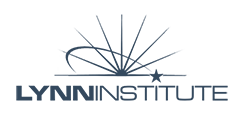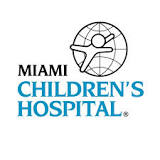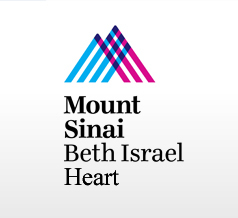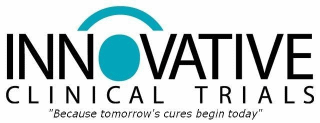Efficacy and Safety of Eslicarbazepine Acetate (BIA 2-093) as Adjunctive Therapy for Refractory Partial Seizures
| Status: | Active, not recruiting |
|---|---|
| Conditions: | Neurology, Epilepsy |
| Therapuetic Areas: | Neurology, Other |
| Healthy: | No |
| Age Range: | 16 - Any |
| Updated: | 11/14/2018 |
| Start Date: | December 2, 2008 |
| End Date: | January 2019 |
Efficacy and Safety of Eslicarbazepine Acetate (BIA 2-093) as Adjunctive Therapy for Refractory Partial Seizures in a Double-blind, Randomised, Placebo-controlled, Parallel-group, Multicentre Trial
The purpose of this study is to determine whether Eslicarbazepine acetate (BIA 2-093) is an
effective adjunct therapy in the treatment of refractory partial seizures
effective adjunct therapy in the treatment of refractory partial seizures
The study was designed to include 3 parts; only the first part is described in this report.
Part I of the study was an international, randomized, placebo-controlled, double-blind,
parallel group, multicenter clinical study conducted in 19 countries at 173 sites in 653
subjects with refractory simple partial or complex partial seizures, with or without
secondary generalization. After screening procedures and confirming eligibility, subjects
entered Part I of the study, which consisted of 3 periods.
The first period was an 8 week observation baseline period (Week -8 to Week -1) during which
subjects were instructed on how to complete the seizure diary. At the end of the 8 week
observational baseline period, eligible subjects were randomized in a 1:1:1 allocation ratio
to 1 of 3 treatment groups (with a blinded treatment assignment):
- Placebo
- ESL 800 mg QD
- ESL 1200 mg QD Subjects then entered the second period of Part 1, the 2 week, double
blind, up titration period (Week 1 to Week 2). During this period, subjects in the ESL
800 mg group received ESL 400 mg QD, subjects in the ESL 1200 mg group received ESL 800
mg QD, and subjects in the placebo group received placebo QD.
Subjects then entered the third period of Part I, the 12 week, double-blind, maintenance
period (Week 3 to Week 14) where subjects in the ESL 800 mg group received ESL 800 mg QD,
subjects in the ESL 1200 mg group received ESL 1200 mg QD, and subjects in the placebo group
received placebo QD.
At the completion of the maintenance period, subjects who did not enter Part II were to be
tapered off study drug while maintaining the blind according to the following down titration
procedure: subjects on 800 mg were down titrated to 400 mg for a duration of 2 weeks, and
subjects on 1200 mg were down titrated to 800 mg for 1 week and then down-titrated to 400 mg
for 1 week and subjects in the placebo group received placebo QD for 2 weeks. During Part I,
1 to 2 concomitant AEDs were allowed in this study and were to be kept stable during the
course of the study.
Part I of the study was an international, randomized, placebo-controlled, double-blind,
parallel group, multicenter clinical study conducted in 19 countries at 173 sites in 653
subjects with refractory simple partial or complex partial seizures, with or without
secondary generalization. After screening procedures and confirming eligibility, subjects
entered Part I of the study, which consisted of 3 periods.
The first period was an 8 week observation baseline period (Week -8 to Week -1) during which
subjects were instructed on how to complete the seizure diary. At the end of the 8 week
observational baseline period, eligible subjects were randomized in a 1:1:1 allocation ratio
to 1 of 3 treatment groups (with a blinded treatment assignment):
- Placebo
- ESL 800 mg QD
- ESL 1200 mg QD Subjects then entered the second period of Part 1, the 2 week, double
blind, up titration period (Week 1 to Week 2). During this period, subjects in the ESL
800 mg group received ESL 400 mg QD, subjects in the ESL 1200 mg group received ESL 800
mg QD, and subjects in the placebo group received placebo QD.
Subjects then entered the third period of Part I, the 12 week, double-blind, maintenance
period (Week 3 to Week 14) where subjects in the ESL 800 mg group received ESL 800 mg QD,
subjects in the ESL 1200 mg group received ESL 1200 mg QD, and subjects in the placebo group
received placebo QD.
At the completion of the maintenance period, subjects who did not enter Part II were to be
tapered off study drug while maintaining the blind according to the following down titration
procedure: subjects on 800 mg were down titrated to 400 mg for a duration of 2 weeks, and
subjects on 1200 mg were down titrated to 800 mg for 1 week and then down-titrated to 400 mg
for 1 week and subjects in the placebo group received placebo QD for 2 weeks. During Part I,
1 to 2 concomitant AEDs were allowed in this study and were to be kept stable during the
course of the study.
Inclusion Criteria
At V1 (screening), patient must be/have:
1. Written informed consent signed by patient.
2. Aged 16 years or more (patients under 18 years of age require parental/legal
representative consent). In North America as well as in other participating countries,
when appropriate and/or required by state or local law, minor patients must give
written informed assent prior to participation in the study.
3. A documented diagnosis of epilepsy since at least 12 months prior to screening.
4. At least 4 partial-onset seizures (including subtypes of simple partial, complex
partial and partial seizures evolving to secondarily generalised) on the 4 weeks prior
to screening.
5. Currently treated with 1 or 2 AEDs (any except OXC), in a stable dose regimen during
at least 1 month prior to screening. Patients using vigabatrin should have been on
this medication for at least 1 year with no deficit in visual field identified (a
confirmatory test should be available within 1 month before study entry). The device
for VNS should be implanted at least 6 months before screening; parameters need to be
stable for at least 1 month prior to screening (VNS will not be counted as concomitant
AED).
6. Excepting epilepsy, patient is judged to be in general good health based on medical
history, physical examination findings, and clinical laboratory test results.
7. Post-menopausal or otherwise incapable of becoming pregnant by reason of surgery or
tubal ligation. In case of women of childbearing potential (WOCBP), patient must
present a serum beta-human chorionic gonadotropin (B-hCG) test consistent with a non
gravid state and agree to remain abstinent or use reliable contraception (hormonal
contraception should be combined with a barrier method) beginning at screening and
continuing at least to the PSV.
At V2 (randomisation), patient must have:
8. At least 8 partial-onset seizures during baseline with at least 3 partial-onset
seizures in each 4-week section of the 8-week baseline period prior to randomisation
(documented in a diary) and no seizure-free interval exceeding 28 consecutive days.
9. In case of WOCBP, patient must present a urine B-hCG test consistent with a non gravid
state.
10. Diaries satisfactorily completed by the patient or his/her caregiver.
11. Satisfactorily complied with the study requirements during the baseline period
(including no changes in concomitant AED therapy should have occurred in the baseline
period).
Exclusion Criteria
At V1 (screening), patients must not be/have:
1. Only simple partial seizures with no motor symptomatology (classified as A2 4
according to the International Classification of Epileptic Seizures).
2. Primarily generalised seizures.
3. Known progressive neurological disorders (progressive brain disease; epilepsy
secondary to progressive cerebral lesion).
4. Occurrence of seizures too close to count accurately.
5. History of status epilepticus or cluster seizures (i.e., 3 or more seizures within 30
minutes) within the 3 months prior to screening.
6. Seizures of non-epileptic origin.
7. Seizures of psychogenic origin within the last 2 years.
8. Major psychiatric disorders.
9. Documented diagnosis of schizophrenia with accompanying documented history of at least
1 acute psychosis episode within the last 2 years) or history of suicide attempt.
10. Currently treated with OXC.
11. Using benzodiazepines on more than an occasional basis (defined as more than 2 times
per week), except when used chronically as AED.
12. Known exposure to Eslicarbazepine acetate from previous study.
o Previous use of Eslicarbazepine acetate or participation in a clinical study with
Eslicarbazepine acetate (patients not exposed to Eslicarbazepine acetate [e.g., screen
failed] are allowed).
13. Known hypersensitivity to carboxamide derivatives.
14. History of abuse of alcohol, drugs or medications within the last 2 years.
15. Uncontrolled cardiac, renal, hepatic, endocrine, gastrointestinal, metabolic,
haematological or oncology disorder.
16. Second or third-degree atrioventricular blockade not corrected with a pacemaker.
17. Relevant clinical laboratory abnormalities (e.g., sodium <130 mmol/L, alanine or
aspartate transaminases >2.0 times the upper limit of the normal, white blood cell
[WBC] count <3,000 cells/mm3) or for patients of Asian ancestry, positive HLA B*1502
test.
18. Estimated creatinine clearance <60 mL/min [men: (140-age) x weight/serum creatinine x
72; women: (0.85) (140-age) x weight/serum creatinine x 72. Age in years, weight in
kg, and serum creatinine in mg/dL].
19. Pregnant or nursing.
20. Participation in other drug clinical trial within the last 2 months or received an
investigational drug within 5 half-lives of this other product, whichever is longer.
Patient(s) who are known to have not taken any doses of study drug(s) in earlier
study(ies) (e.g. screen-failures) are allowed without any time limitation.
21. Not ensured capability to perform the trial.
22. Any other condition or circumstance that, in the opinion of the Investigator, may
compromise the patient's ability to comply with the study protocol.
23. Currently treated with VNS, but implanted <6 months before screening or parameters not
stable for at least 1 month prior to screening.
At V2 (randomisation), patients must not be/have:
24. Inadequate compliance to concomitant AEDs during the 8-week baseline period or to
screening exclusion criteria.
25. Inadequate completion of the study diary.
26. Any other condition or circumstance that, in the opinion of the Investigator, may
compromise the patient's ability to comply with the study protocol.
We found this trial at
107
sites
Lynn Health Science Institute Our mission is to provide clinical trials research and health services...
Click here to add this to my saved trials
Johns Hopkins University The Johns Hopkins University opened in 1876, with the inauguration of its...
Click here to add this to my saved trials
Click here to add this to my saved trials
Montefiore Medical Center As the academic medical center and University Hospital for Albert Einstein College...
Click here to add this to my saved trials
Click here to add this to my saved trials
Miami Children's Hospital Welcome to Miami Children
Click here to add this to my saved trials
1211 Medical Center Dr
Nashville, Tennessee 37232
Nashville, Tennessee 37232
(615) 322-5000

Vanderbilt Univ Med Ctr Vanderbilt University Medical Center (VUMC) is a comprehensive healthcare facility dedicated...
Click here to add this to my saved trials
Beth Israel Med Ctr The physicians and staff of Mount Sinai Beth Israel's Heart Institute...
Click here to add this to my saved trials
Children's Hospital of Philadelphia Since its start in 1855 as the nation's first hospital devoted...
Click here to add this to my saved trials
Click here to add this to my saved trials
Click here to add this to my saved trials
Click here to add this to my saved trials
McFarland Clinic, PC It has been over 65 years since the founders of McFarland Clinic...
Click here to add this to my saved trials
Click here to add this to my saved trials
Click here to add this to my saved trials
University of Maryland Medical Center Founded in 1823 as the Baltimore Infirmary, the University of...
Click here to add this to my saved trials
Click here to add this to my saved trials
Click here to add this to my saved trials
Click here to add this to my saved trials
Click here to add this to my saved trials
Click here to add this to my saved trials
Click here to add this to my saved trials
Click here to add this to my saved trials
Click here to add this to my saved trials
Click here to add this to my saved trials
Click here to add this to my saved trials
Click here to add this to my saved trials
Click here to add this to my saved trials
Click here to add this to my saved trials
Click here to add this to my saved trials
Click here to add this to my saved trials
Click here to add this to my saved trials
Click here to add this to my saved trials
Click here to add this to my saved trials
Click here to add this to my saved trials
Click here to add this to my saved trials
4201 St Antoine St
Detroit, Michigan 48201
Detroit, Michigan 48201
(313) 577-1429

Wayne State University/Detroit Medical Center Founded in 1868, the Wayne State University School of Medicine...
Click here to add this to my saved trials
Click here to add this to my saved trials
Click here to add this to my saved trials
Click here to add this to my saved trials
Click here to add this to my saved trials
Click here to add this to my saved trials
Click here to add this to my saved trials
Click here to add this to my saved trials
Click here to add this to my saved trials
Click here to add this to my saved trials
Click here to add this to my saved trials
Click here to add this to my saved trials
Click here to add this to my saved trials
University of Kentucky The University of Kentucky is a public, land grant university dedicated to...
Click here to add this to my saved trials
Click here to add this to my saved trials
Click here to add this to my saved trials
Loma Linda University Loma Linda University (LLU) is a Seventh-day Adventist educational health-sciences institution with...
Click here to add this to my saved trials
Click here to add this to my saved trials
Madison, Wisconsin 53715
Click here to add this to my saved trials
Click here to add this to my saved trials
Click here to add this to my saved trials
Click here to add this to my saved trials
Click here to add this to my saved trials
Click here to add this to my saved trials
Click here to add this to my saved trials
Click here to add this to my saved trials
Click here to add this to my saved trials
Click here to add this to my saved trials
Click here to add this to my saved trials
Click here to add this to my saved trials
Click here to add this to my saved trials
Click here to add this to my saved trials
Click here to add this to my saved trials
Click here to add this to my saved trials
Click here to add this to my saved trials
Click here to add this to my saved trials
Click here to add this to my saved trials
Click here to add this to my saved trials
Click here to add this to my saved trials
Click here to add this to my saved trials
Click here to add this to my saved trials
Click here to add this to my saved trials
Click here to add this to my saved trials
Pittsburgh, Pennsylvania 15224
Click here to add this to my saved trials
Click here to add this to my saved trials
Click here to add this to my saved trials
Click here to add this to my saved trials
Click here to add this to my saved trials
Click here to add this to my saved trials
Click here to add this to my saved trials
Click here to add this to my saved trials
Click here to add this to my saved trials
Click here to add this to my saved trials
Click here to add this to my saved trials
Click here to add this to my saved trials
Click here to add this to my saved trials
Click here to add this to my saved trials
Click here to add this to my saved trials
Click here to add this to my saved trials
Click here to add this to my saved trials
Click here to add this to my saved trials
Click here to add this to my saved trials











